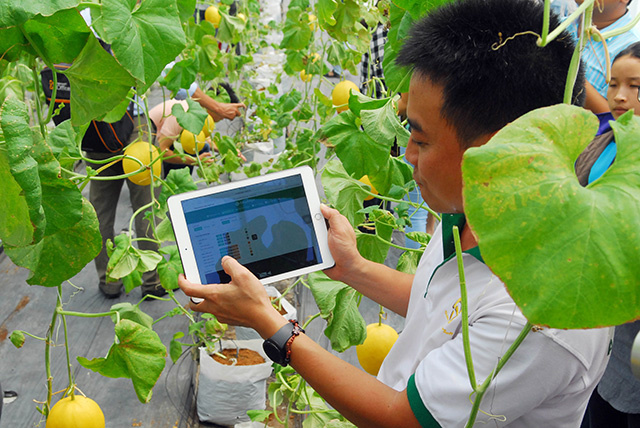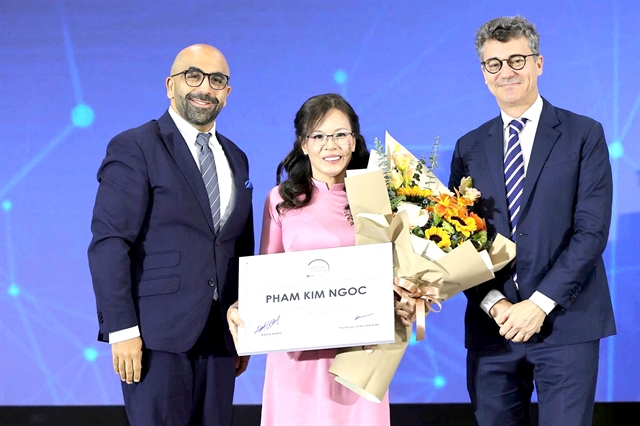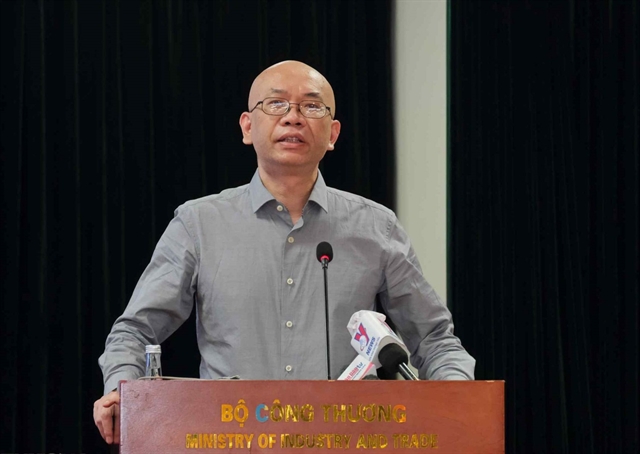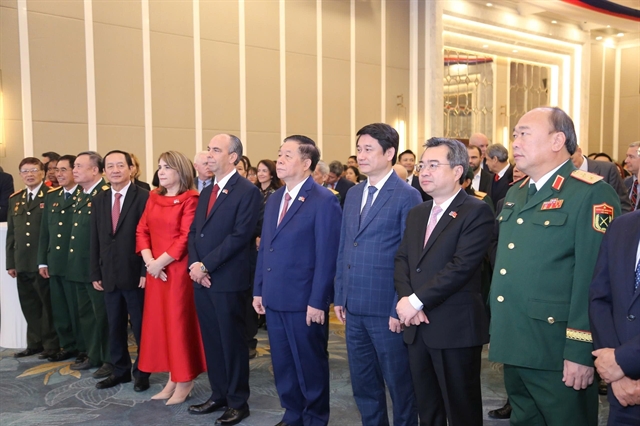 Economy
Economy


|
| Trần Thanh Hải, deputy director of the Import-Export Department under the Ministry of Industry and Trade. |
With its special geographical position, Việt Nam has advantages in promoting production, export, and logistics services. The Government identified logistics as key to promoting socio-economic development and improving the economy's competitiveness.
Trần Thanh Hải, the deputy director of the Import-Export Department under the Ministry of Industry and Trade, spoke to Vietnam News Agency about this issue.
How is green logistics developed in Việt Nam?
Sustainable development and environmental protection are world issues relevant to all economic sectors, including the logistics service industry.
Green logistics is the development of logistics services, ensuring the economical use of fuel and resources, and reducing emissions, thereby contributing to environmental protection.
Logistics has a high emission rate, especially for land, water, and air transport. Therefore, economical fuel use, emission limitation, and carbon neutralisation are requirements for future logistics enterprises. It is the development of green logistics.
The transport service has the highest emissions rate among all types of logistics. Besides that, the operation of logistics centres also has a certain emission rate.
Among the modes of transport in Việt Nam, road transport is common, and using old vehicles also increases the emission rate relatively much.
In addition, there is the operation of shipping fleets. At present, the volume of cargo transported by sea is also high, so the operation of these fleets needs to be monitored in the use of environmentally friendly fuels. Recently, the volume of cargo transported by air has also grown rapidly. These are the factors that contribute to the increase in emissions.
On the other hand, the issue of carbon neutrality is also carried out via greening the environment, such as planting forests and switching to biofuels and environmentally-friendly fuels.
However, Vietnamese enterprises have not yet consciously participated in these activities.
What difficulties and challenges will the logistics industry face when shifting to the development of green logistics? What will the Ministry of Industry and Trade do to support the logistics industry in the future?
Emissions are mainly from means of transport. Therefore, in 2022, the government issued an action programme to promote transport businesses to switch to using environmentally friendly fuels such as biofuels or electric vehicles and ships using fewer fossil fuels. Besides that, ships would follow the shipping organisation's regulations on reducing sulfur in the fuel for ships. Vietnamese shipping companies must also have a roadmap to comply with the regulations.
For delivery in urban areas, several delivery and postal businesses have also had trials in using electric vehicles such as electric motorbikes. That can ensure flexibility in transportation and contribute to reducing transportation costs and the emission rate.
Does Việt Nam have criteria to assess the level of green logistics activities at enterprises? What are the factors affecting the development of green logistics?
Việt Nam does not have a common criterion for assessing green logistics indicators in enterprises. However, in some fields, such as port transportation, there are criteria for green ports that require saving energy in port operations.
Another activity that can exploit green logistics is the operation of logistics centres. When these centres have a large area on the roof, they can use renewable energy such as solar or wind power to meet the energy needs of the centres themselves.
I think there are several factors affecting the development of green logistics.
The first is the perception of the businesses. Transformation requires changes in habits and processes, especially investment in technology and change in transport means. The awareness of those changes in businesses is very important. Suppose the leaders of the businesses are unaware of the role of green logistics and environmentally friendly fuels. In that case, it is challenging for them to implement the development of green logistics.
Secondly, they need a clear and specific roadmap for each field, like Việt Nam's green ports. The transport industry has a strategy for reducing emissions in general, but that strategy must be developed with a more detailed plan for each field, such as road, sea, air, and logistics centres.
The third is the cost of switching to green logistics. The transformation happens at the enterprises, so they must ensure the investment for this issue is included in their business plans.
However, they need support from State management agencies and non-governmental organisations (NGOs) to promote this transformation.
What green logistics model is suitable for Việt Nam?
Some countries are also promoting the development of green logistics. It is also associated with changes in industrial production and organic farming production.
There are some models Việt Nam can refer to, such as models in Germany, Japan and Singapore. These countries are switching to renewable energy, including wind and solar power.
They study vehicles using electric motors instead of engines using fossil fuels such as gasoline.
These solutions are in the early stages of testing, not on a mass scale yet. In the future, with the trend of electric vehicles gradually becoming popular, Việt Nam's means of transporting cargo will also have to switch to using the electric vehicle more.
Another experience is propaganda for businesses to help them understand the role of green development. Therefore, they will voluntarily apply for green development and have investments to promote it.
In 2022, the Government issued several policies, including Resolution 163 on synchronous development of logistics and a strategy for changing fuel used in transport.
I think this is an important legal basis and shows the orientation and interest of the Government in this field.
Besides that, the Government needs to promote propaganda, raise awareness for businesses and support businesses in switching to green development.
In addition to ensuring profits, jobs and business expansion, investment in green transformation is also a factor that businesses must consider.
There are still few businesses that pay attention to investment in green logistics. What is the main cause of this problem?
The main thing is the businesses' awareness and understanding of green transformation. The businesses still do not think green development directly relates to them.
Besides support in policies and finance, maybe the State also needs to consider the building standards to prompt businesses into green development.
For example, Việt Nam applies standards for fuel used, such as euro4, euro5, and euro6, to reduce emission rates and environmental pollutants.
It is necessary to have a roadmap applying those standards for businesses having transport means using fuels with a high emission index. They must invest in new vehicles to reduce emissions. VNS


.jpg)

